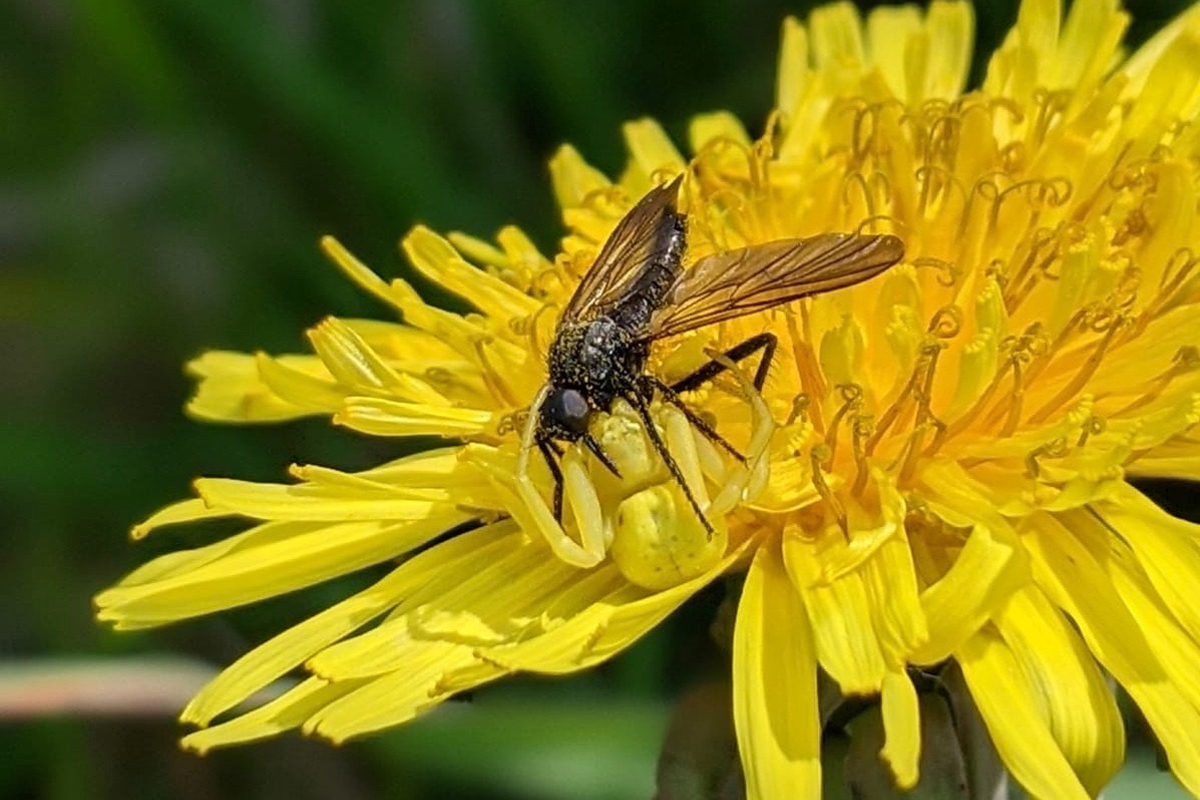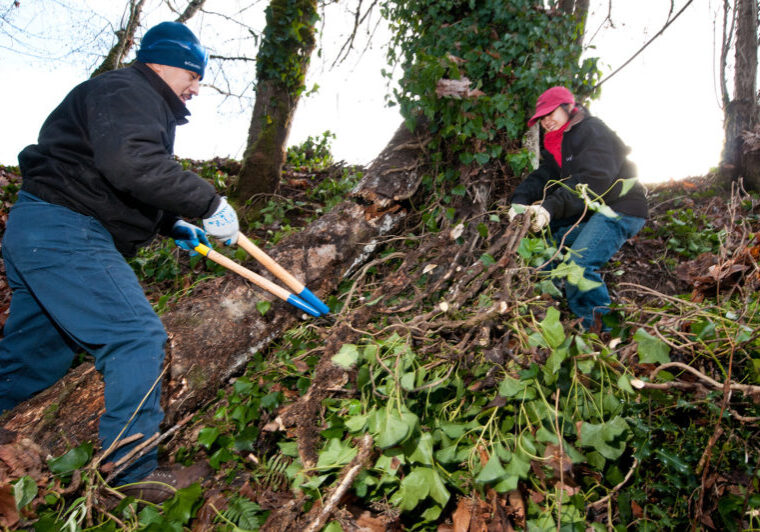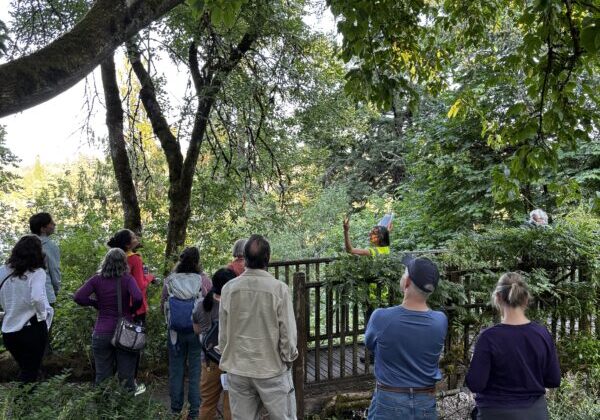There are many things you can do to attract wildlife to your property and improve existing wildlife habitat:
- Thin your forest, leaving a snag for woodpeckers or raptors
- Leave fallen logs on the ground for salamanders
- Plant native Oregon white oak, which supports over 200 species of native wildlife.
- If you own farmland, you can attract native bees to pollinate your crops and increase yields.
- Improve stream sides for songbirds by planting native willows and other shrubs and trees. The Guide for Using Willamette Valley Native Plants Along Your Stream is a helpful resource for selecting plants.
- Visit the Streams & Wetlands service page to learn more about how to enhance and improve water quality and habitat.
- If you’d like to plant native species for pollinators, see our Pollinator Plants and Bloom Periods chart for our District and the greater Portland Metro Area.
- Plant a native habitat garden in your yard. The Meadowscaping Handbook is a great resources for this. For general help with naturescaping, visit the Backyard Habitat Certification Program or our neighbors at East Multnomah SWCD.
- Identify and remove invasive species. Be careful, though: many birds nest in blackberry, so you should avoid mowing it during nesting season (April – July).
- Manage stormwater on your property. Learn how at a Stormwater Stars demonstration.
Want to improve wildlife habitat on your forest land?
The Woodland Fish and Wildlife publication series is for you. A variety of practical “how to” publications are written just for small forest owners in the Pacific Northwest:
- Wildlife Brush Shelters
- Managing Small Woodlands for Raptors
- Amphibians in Managed Woodlands
- Habitat Piles
If you live on Sauvie Island or along the Multnomah Channel, or just want more ideas for habitat improvement, check out our Sauvie Island and Multnomah Channel Bottomlands Conservation Opportunities guide.



